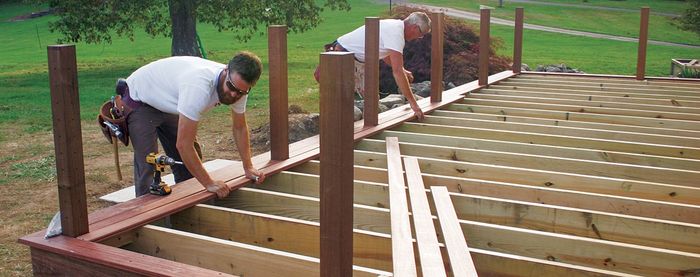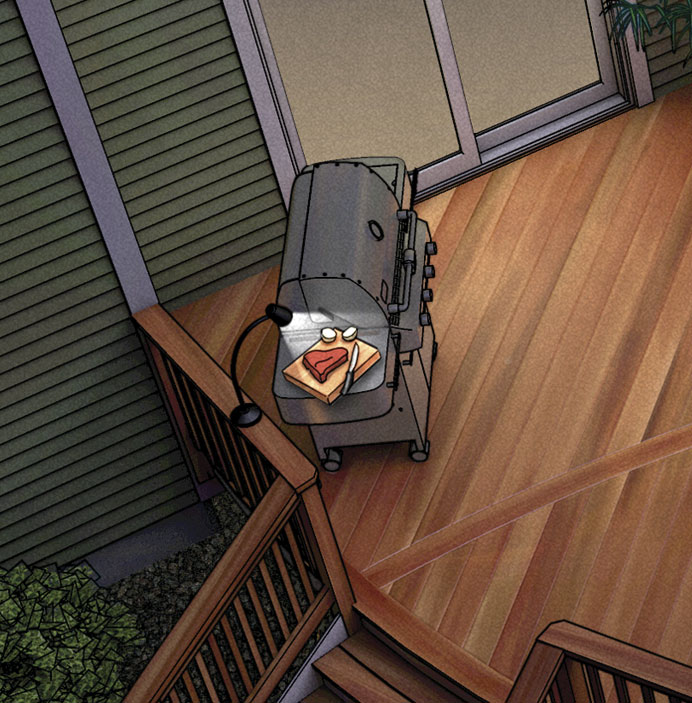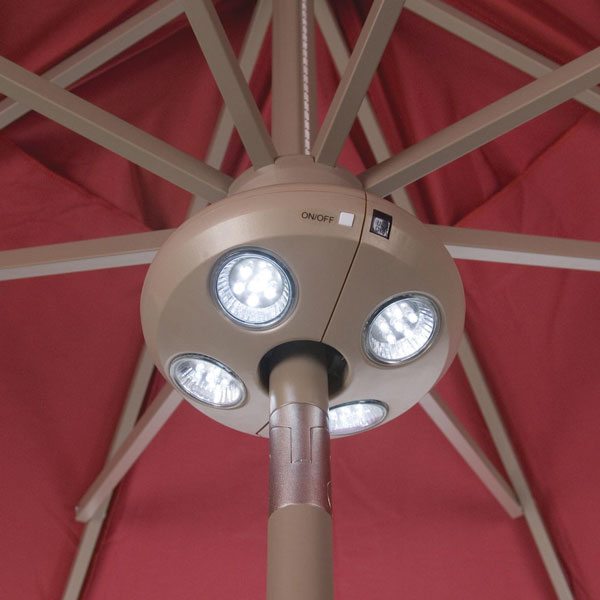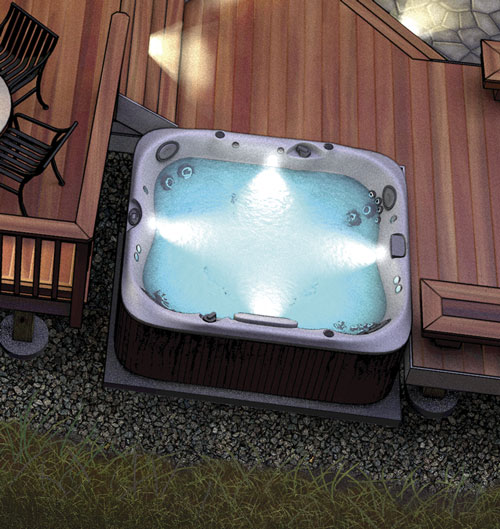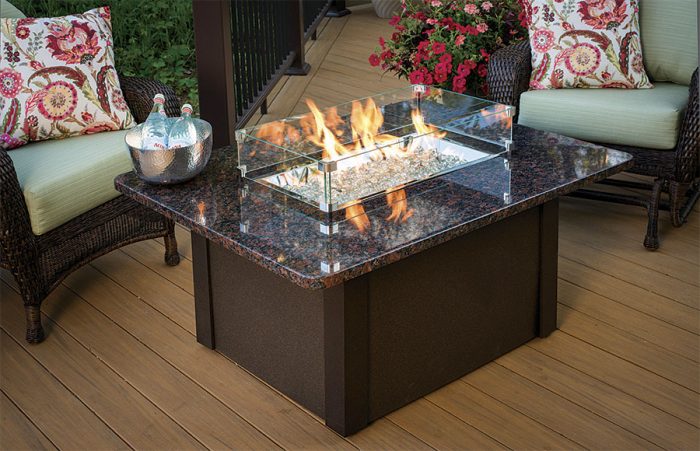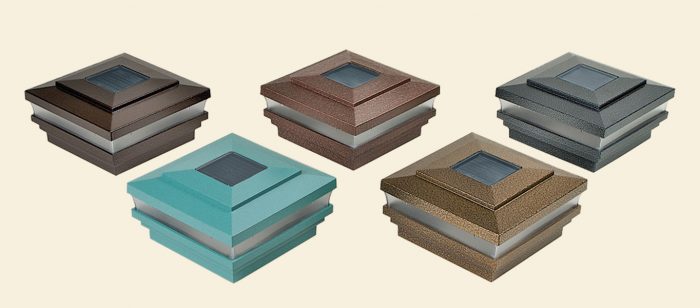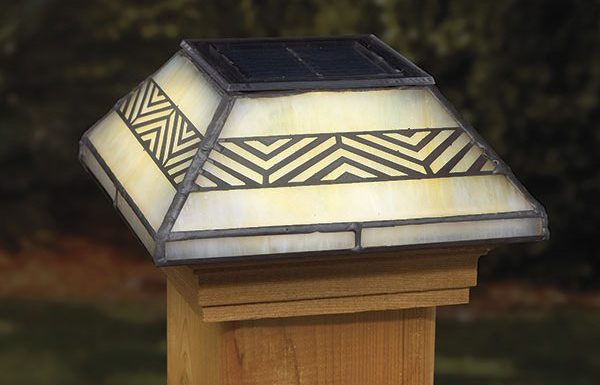Bright Ideas for a Well-Lit Deck
Make your deck safer and more enjoyable with good lighting.
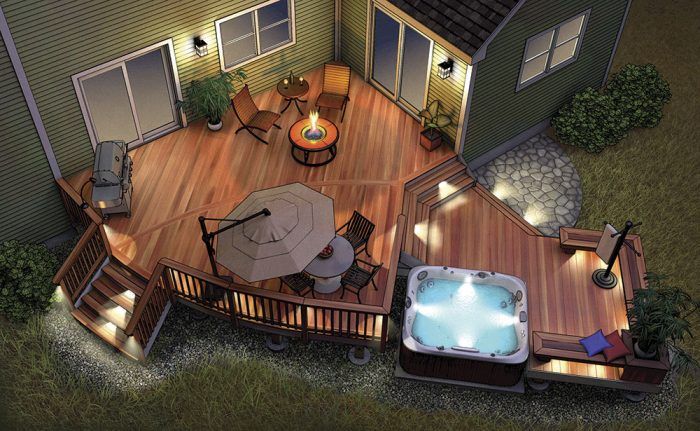
Synopsis: Nobody wants the fun on their deck or patio to stop when the sun goes down, but keeping the party going and keeping everybody safe requires good deck lighting. Code expert Glenn Mathewson describes how a good deck-lighting strategy involves three types of lighting: essential, targeted, and ambient.
Aside from a sturdy structure and strong railings, good lighting is an outdoor deck’s most important safety feature. Decks might have multiple levels, or they might be wet and slippery from nearby hot tubs and wet bars. In addition, decks can be crowded with guests unfamiliar with the layout.
Proper deck lighting is about more than just safety, however. The right lights in the right spots can make a deck better looking and more enjoyable. Although deck lighting can feel overwhelming with so many fixtures, brightness levels, and installation methods to choose from, the end result is worth it. After all, who wants the fun times on their deck to stop when the sun goes down?
Three levels of lightThe best deck lighting considers all three kinds of light. Essential lighting is that required by code at doors and stairs. Targeted lighting is for specific tasks, such as grilling or eating. Ambient lighting creates an inviting space and brightens dark areas. |
Essential lighting
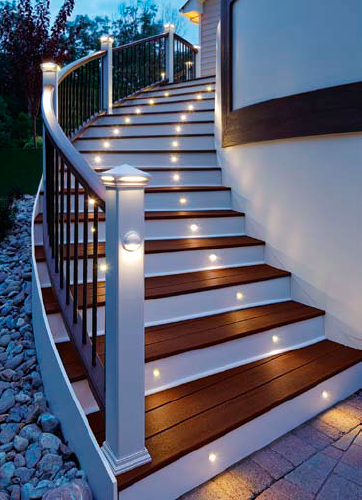 There are two spots on a deck where building codes require lighting. For security, the International Residential Code (IRC) requires a light near every exterior door with grade-level access. This light allows you to see visitors before you open the door. If you’re installing a door adjacent to a deck that has access to grade, you’ll need to include a light with a wall-mounted switch.
There are two spots on a deck where building codes require lighting. For security, the International Residential Code (IRC) requires a light near every exterior door with grade-level access. This light allows you to see visitors before you open the door. If you’re installing a door adjacent to a deck that has access to grade, you’ll need to include a light with a wall-mounted switch.
The code also requires that stairways be well lit; unfortunately, the IRC’s language is cumbersome. In simple terms, it calls for a fixture at the top landing of every stairway and for a “means to illuminate” the whole stairway. For a deck with stairs near the door, a single bright light may be enough to illuminate both the stairs and the entry. When the stairs are farther from the door, you’ll have to light these areas separately.
Stairways must be at least 36 in. wide, so nonrecessed, post-mounted lights may create a code violation on narrow stairs. Keep in mind that according to the IRC, even a single step between two parts of a deck is a stairway and so is subject to stair-lighting requirements.
Targeted Lighting
Many decks have lighting targeted for specific tasks. When you’re making a deck-lighting plan, it’s helpful to break the deck into rooms rather than approach it as one big space. Common areas include food prep, dining, and pools and hot tubs.
Ambient Lighting
Compared to that of indoor spaces, a deck’s ambient lighting is less intense and more dispersed. It’s good for filling in where code-required and targeted lighting leave off. Ambient lights can be built into the railing, attached to balusters, or installed in the floor. Many of these lights add an attractive design element on their own.
Living Spaces
Families love sitting around indoor fireplaces, so it’s no surprise that outdoor fire pits are increasingly common in deck construction. They’re a great way to bring light to the center of a large deck. Just make sure that any surface surrounding the fire pit is noncombustible. Both wood- and propane-fueled fire pits provide light and a natural gathering spot in the center of a deck, which is often tough to illuminate.
Dining lights should be overhead. Porch roofs and pergolas provide the ideal location for linevoltage-connected dining fixtures and ceiling fans. The roof makes it easy to hide the wires and provides a sturdy spot for mounting the fixtures. Lighting for dining areas should be dimmer controlled to match the mood.
For more photos and details, click the View PDF button below:
Fine Homebuilding Recommended Products
Fine Homebuilding receives a commission for items purchased through links on this site, including Amazon Associates and other affiliate advertising programs.

MicroFoam Nitrile Coated Work Gloves

Jigsaw
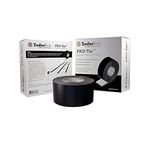
Flashing and Joist Tape
